The Australian Outback may be a desolate and unforgiving place, but it offers a number of spectacular sites you shouldn’t miss. We spent three weeks driving and camping across the Outback and discovered rugged landscapes, underground towns and wildlife (from kangaroos to crocodiles).
Don’t be scared off by movies that show the Outback as a dangerous frontier. It’s actually quite inviting; just make sure you bring a good map, some sunscreen, and plenty of water on your trip! Read on for my top 8 Outback attractions.
1) Ayers Rock (Uluru)
Ayers Rock (also known as Uluru) is probably the most well known and most visited site in the Outback. It is essentially just a massive rock, but what makes it spectacular is its location in a barren area. After driving through nothing but flat sandy desert for days, it’s a bit shocking to come across this large sandstone formation.
Make sure to brave the chilly early morning temperatures to see the sunrise hit Uluru. It shines along the front face, giving the rock a bright red glow.
If you are particularly adventurous you can climb Uluru using a chain handrail. It is not for the faint of heart; at least 35 tourists have plummeted off of the sides to their deaths over the years. We decided to follow the posted signs and not scale the rock, which the local Aborigines believe is sacred and should not be climbed.
There are several other hikes in the canyons surrounding Uluru, however, that are just as interesting, less dangerous and more respectful of local culture. These hikes offer up-close views of unique rock formations and cave drawings.
2) Kakadu National Park
Kakadu National Park isn’t technically located in the Outback, but in order to get there by car you have to drive through the Outback. Kakadu is about 100 miles southeast of Darwin on the northern edge of central Australia. With the exception of an African safari, I have never seen such a high concentration of wildlife as in Kakadu.
We stayed in our own tent in a largely empty campsite at the national park, which had picnic tables and restrooms. While the heat was oppressive and the flies were overwhelming, it was worth it to see crocodiles, kangaroos, dingoes, bats, snakes, birds, and more in abundance.
3) Kings Canyon
King’s Canyon is not too far from Uluru (Ayers Rock) but does not have nearly as many tourists. The rugged trail circles the canyon rim, passing by 1,000-foot vertical drops.
I consider it one of the best free hikes in the world and recommend it for adventurous travelers (for more information read my photo essay on the King’s Canyon hike).
There are no fences or barriers, so if you’re so inclined you can walk right up to the canyon edge and peer over the sheer cliff walls. This is not a hike for those afraid of heights!
4) Coober Pedy
Visiting the small town of Coober Pedy is like stepping into a movie about the apocalypse. This desert village does not have much to look at– unless you venture under the surface. Due to the constant strong winds, locals have built a number of structures underground, including hotels and a church.
The motel we stayed at was completely underground; a dank hallway led to our room, which was dark and windowless. While the lodging was not the most comfortable, Coober Pedy is a unique place that’s worth a stopover on an Outback road trip. The desolate scenery and underground buildings provide plenty of photo ops.
Above ground, Coober Pedy has a barren look that is straight out of Mad Max. In fact, many of the scenes from Mad Max: Beyond Thunderdome were filmed in the surrounding desert. Junkyards and scrap metal heaps dot the area.
5) Meeting the locals
One of the highlights of our Outback trip was meeting a local character who seemed like a real life Crocodile Dundee.
Jimmy “The Bushtucker Man” lives in a small Outback town called Tennant Creek and has become a bit of a local celebrity. By day he cleans the bathrooms at a small local campground but several nights a week he puts on a demonstration of how to live off of the land by eating plants, grubs, and insects.
He looks, acts, and talks like an Outback eccentric, and we had a great time hearing his stories of back-country survival. I also enjoyed sampling some of the local edible insects like raw witchetty grub.
Jimmy’s campfire demonstration only cost a couple of dollars and was well worth it.
6) Giant termite hills
If you drive through the Outback you won’t miss these strange, mud-colored formations dotting the landscape. Once we stopped to investigate we learned they were giant termite hills, most around 5 feet tall but some occasionally up to 15 or 20 feet in height!
The termite mounds are visible from the Stuart Highway and you can simply pull over on the side of the road to snap a photo with one.
7) Random animal encounters
Since most of the Outback is desolate, you might not see a lot of wildlife apart from the hordes of Kangaroos that dart in front of traffic and sometimes end up as roadkill. However, if you are lucky you’ll see some exotic animals along the way.
One day we saw a cloud of dust along the side of the road and stopped to find a herd of camels! Obviously they are not native, but Australia is home to lots of feral species that were introduced from overseas and subsequently thrived in the wild. The camels were brought in the 19th century and, according to some claims, now make up the largest camel population in the world.
One morning we woke up to a rustling sound and saw a strange silhouette circling the tent. It felt like a scene from Jurassic Park, but the creature turned out to be a very inquisitive emu that hung around our campsite all morning. We also had Outback encounters with dingoes, feral donkeys and a giant buzzard that almost hit our windshield.
8) Feeling like the only people on the planet
One of the coolest parts of visiting the Outback is the sheer emptiness of it. Some days we would drive for hours without seeing anyone or anything else. The Australian Outback is probably one of the few places left on earth where this is still possible. It’s a very unique experience and one that shouldn’t be missed.
Have you visited the Outback?
Share your Outback travel tips with other readers by leaving a comment below! If you are reading this post via email or RSS feed, make sure to click on DowntownTraveler.com to leave your comment.
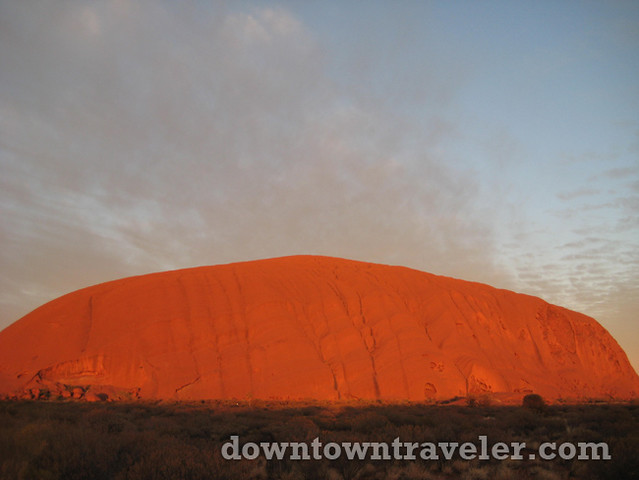

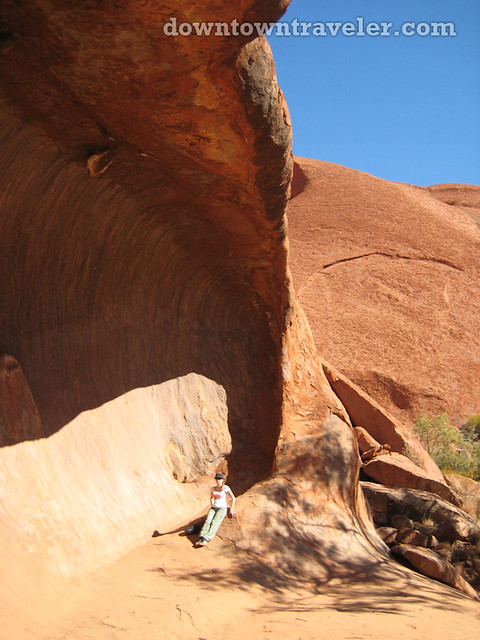

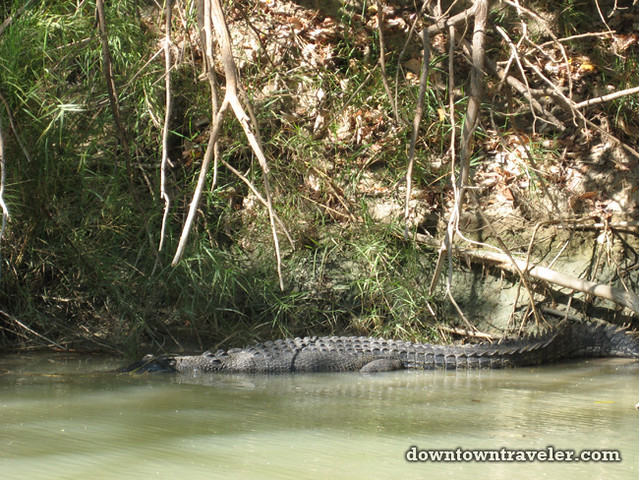

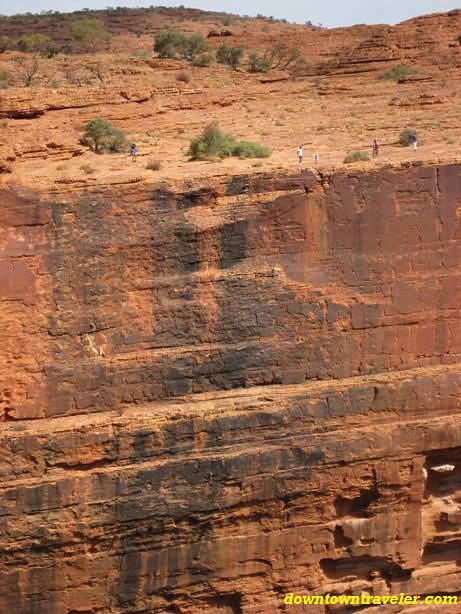
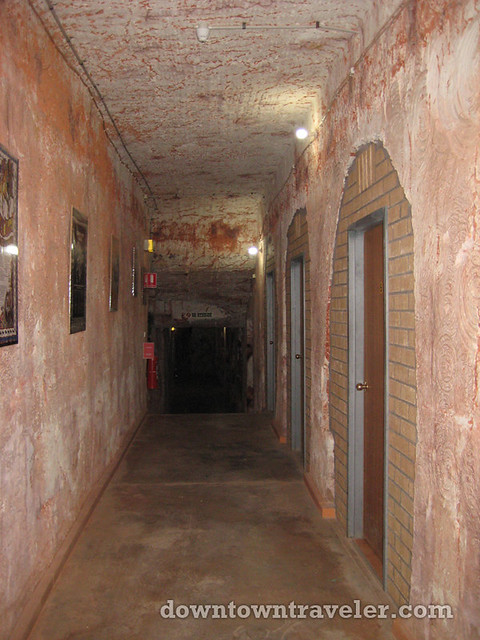
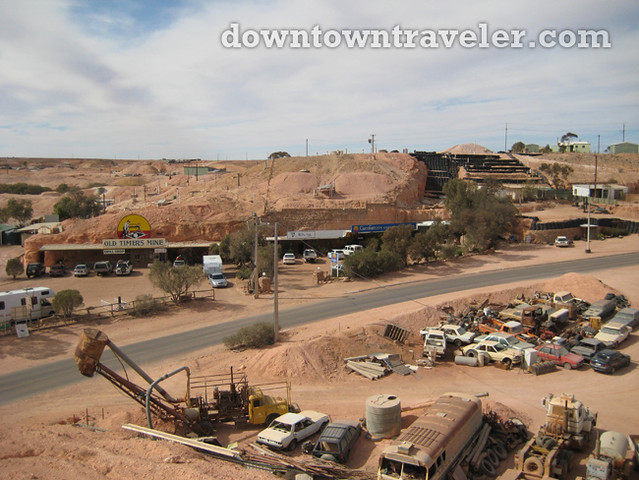


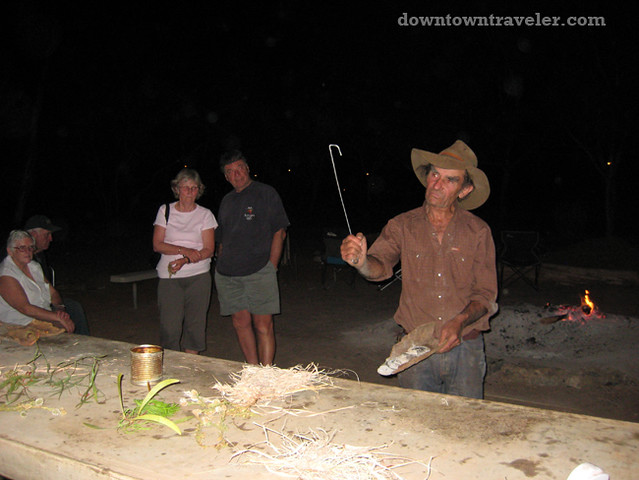
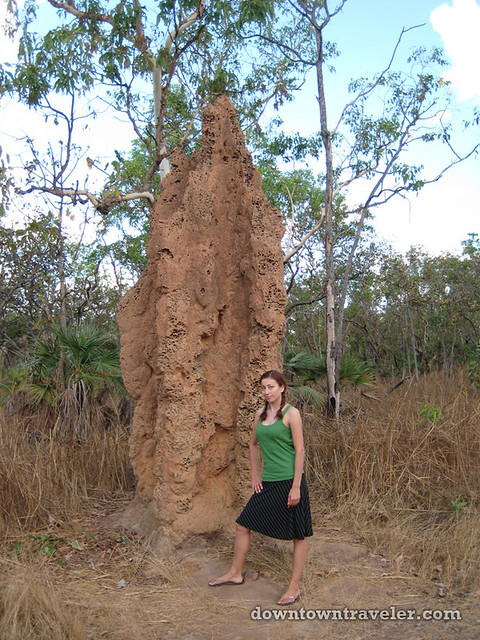

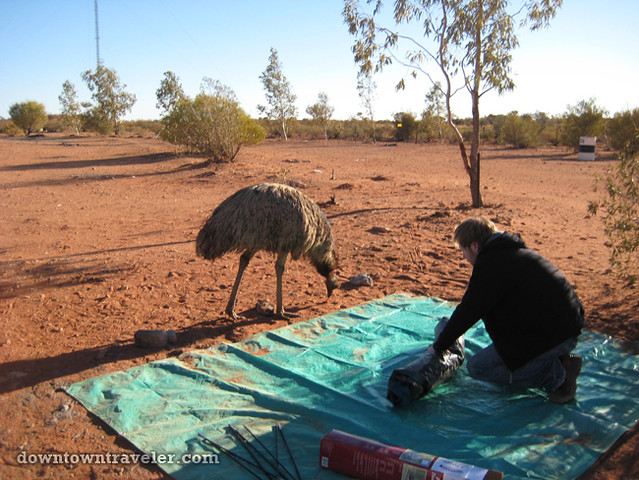
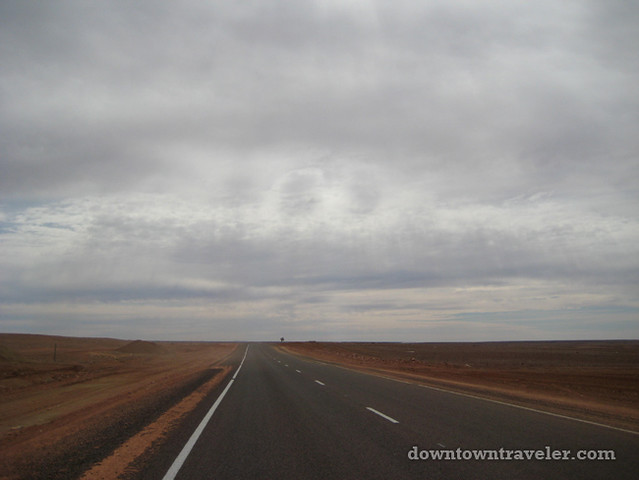

















Great post and pictures. Never been to Australia, but judging by these pictures, I am sure I would love it. I especially love the last picture with the great open road.
Yeah it’s definitely cool to be in a place that’s that remote and empty. Too bad it’s such a pain to get down to Australia…
Looks cool. Got to get myself down to Australia first!
Definitely! You need to road trip through Australia. It’s an amazing experience– you’ll go through beaches, cities and the desolate Outback 🙂
Awesome coverage! I spent 2.5 months driving from Perth to Darwin in 2009, and my favorite spots were Coral Bay, 80-Mile Beach at sunset, and all of the beautiful hikes and gorges off of the Gibb River Rd. in the Kimberley. We did it all with a 4WD, but if it’s really dry and you don’t mind a bit of corrugation, you can definitely do it without 🙂 Happy traveling!
That sounds awesome! We didn’t get a chance to go to Perth or any of western Australia, but that’s definitely up there on my to do list. We wanted to but there just wasn’t enough time 🙁
I went to Australia, but just up the Gold Coast. So did you like the taste of the bugs? You’re so adventurous!
Well there were two kinds of bugs, one that he cooked and one that I ate raw. The cooked one wasn’t too bad but the raw one was really juicy and squishy…i definitely gagged on that one…
Great picks – but don’t miss a) Camel racing at Bedourie; Cawnpore Lookout; Wycliffe Well – alien capital of OZ; AND the Devil’s Marbles!!
I stayed at a cattle station in WA for two weeks 200km from the nearest ‘town’ (one shop) called Leonora. It was red dust all the way but amazing to experience that remote lifestyle. The food was delivered once a week by the postman who was on the road for two days making all his stops to the remote stations. We also had kangaroo hunters come through who presented the station owners with some tails to put in stew. The owners were amazing hosts and I went round with them doing jobs – mending fences, grading roads, gardening, cooking… The stars at night were incredible. I would really recommened it – it’s so far from city life, you can hardly believe it.
I never went to Australia before but seeing this picture wanna get straight to it and have some some.!